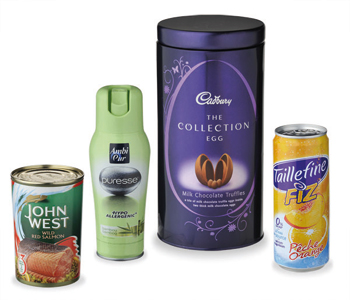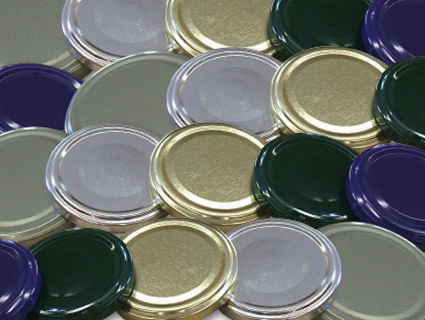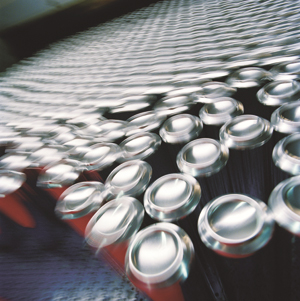Metal packaging – Data 2011
DATA & FACTS Figures and use trends for containers ever up-to-date despite their "age", and that have been able to reinvent themselves by exploiting their traditional strengths of being tamper-proof, sturdy, guaranteeing an absolute barrier to external agents and perfect product preservation as well as being recyclable. Plinio Iascone
 The range of products packed in metal packaging is very broad, comprising food (food and beverages) and non food (chemicals, cosmetics, perfumes, pharmaceutical specialties) products.
The range of products packed in metal packaging is very broad, comprising food (food and beverages) and non food (chemicals, cosmetics, perfumes, pharmaceutical specialties) products.
In addition to the various containers, the metal packaging family also comprises different types of closures (crown caps, twist off caps, screw caps and easy peel lids).
Overall the Italian steel+aluminium metal packaging chain filed the following balance: production 874 t/000, exports 296 t/000, imports 42 t/000 and apparent consumption 620 t/000 (data referring to 2010, the most recent complete yearly balance drawn up by the Istituto italiano Imballaggio).
In 2011 the overall turnover of metal packaging area stood at 3,393 Million euros. In terms of production in weight the ratio between steel and aluminium is respectively 88% and 12%, while in terms of turnover the ratio is 39% to 61%.
Aluminium costs more than steel, which is why aluminium is not used to produce over half kg capacity containers; on the other hand aluminium dominates in many applications (trays, bottles, wrapping film, etc..).
According to calculations made by Pira for 2010 (last official figures available), the world metal packaging market totals a value of 72 billion euros, showing an annual average growthrate of +1.2-1.4%. Metal packaging accounts for approximately 16% of all packaging (443 billion dollars). Also according to Pira, metal packaging production is located 27% in North America (Canada and USA), 24% in the EU, 28% in Asia (Japan, China and India first and foremost); the remaining 21% in other geographic areas.
Overall European production in 2010 is estimated as standing at about 3,750,000 tons, 88% of which steel (tinplate) and 12% aluminium. There are some 290 operators with 36,000 employees.
 Steel packaging in Italy
Steel packaging in Italy
The material used for the production of steel packaging comprises tinplate, chromium plate and uncoated sheet steel.
The world steel industry is undergoing continuous improvements, ranging from the furnace steelmaking composition at the steel mill up to the coating lines. Innovation has, for example, enabled the making of very thin laminates without negatively affecting sturdiness, thanks also to developments in cannery facilities.
Steel packaging can be regarded as a mature industry showing only slight growth trends, particularly as regards the domestic market. The situation is different with regard to exports where in recent years trends have shown interesting growthrates, particularly regarding tinplate packaging, which has reached 32% of total output and that shows further growth potential.
The proportion of high-capacity steel drums destined for exports is also interesting, but the levels reached appear to have stabilized.
Import flows are small on average, accounting for less than 10% of consumption, both as regards tinplate as well as high capacity drums.
According to a initial balance, in 2011 Italian steel packaging production stood at 767,000 tons, equivalent to a turnover of approximately 1,350 million euros.
In quantitative terms, if the current assessments are confirmed, this will mean a drop of 0.6% compared to 2010 figures.
When looking at growth however the two steel packaging families differ sharply: Tinplate packaging production should repeat the figures for 2010 while production of drums should drop due both to the decline in domestic demand as well as that of exports.
With reference to activity in terms of weight over the last decade, the steel packaging industry has shown a + 0.8% annual average growthrate. Considering the sizeable average weight reduction (approximately 30%) involving many categories, the actual average annual growthrate is estimated to be around 1%.
Consolidated figures for 2010 show the production of tinplate packaging (tin or chromium coated steel) as standing at 677,000 tons, figures for 200 litre steel drums standing at 95,000 tons. The former are 44% earmarked for food packaging and are known by the term "open top".
The "general line" accounts for a 30% share with the following breakdown: 25% intended for packaging chemicals, 3.5% used for the edible oil and 1.5% accounted for by "fancy" tins mainly used in the confectionery sector (panettone, chocolates, sweets, etc...
The other two types of tinplate packaging are the closures (crowns caps and twist-off capsules) with a share of 22% and spraycans with a 4% share. Estimates place 70% of largescale steel drums (the raw material used is cold rolled sheet steel with tin coating) for containing chemicals the remaining 30% for use in the agrifood area (for the storage of semi-finished or finished products for industry).
 Aluminium packaging in Italy
Aluminium packaging in Italy
The constant innovation in the production of rolled sheet aluminium has encouraged the progressive spread of use of this type of material in the packaging sector.
The development of special alloys, which enable very thin gauges to be attained, also enables use of aluminium in flexible converter packaging.
The aluminium used for the production of packaging comprises: can stock (entirely imported) used for the production of beverage cans and foil stock used both in the production of foil and for capsules, and can bodies for food products and pads for spraycans.
The different products comprise countless alloys that vary according to type of production and various uses.
In 2010 Italian aluminium packaging production totalled 178,100 tons, comprising 102,100 tons of packaging containers, closures, trays and foil for industrial wrapping and 76,000 tons of converter foil.
Export figures are sizeable, comprising 59% of converter foil area and 23% of containers-trays and closures area production.
According to an initial balance, 2011 ended with a production increase of around 5%.
This is to be particularly put down to the significant growth in the production of beverage cans following Coca Cola’s decision to gradually reduce the use of the tinplate cans for soft drinks.
Over the last decade the aluminium packaging industry has shown a 2.5% annual average growthrate regarding activity in terms of weight.
The segmentation per area of use is as follows: beverage cans 25%, other containers (food tins, aerosol spraycans, flexible tubes) 16%, closures 12.5%, food trays 23.5%, other (wrapping foil for commercial and domestic use) 23%.
Plinio Iascone
Istituto Italiano Imballaggio
Plinio Iascone
Istituto Italiano Imballaggio

















